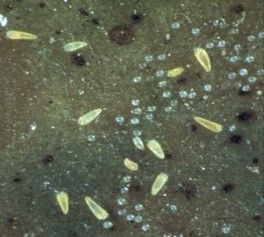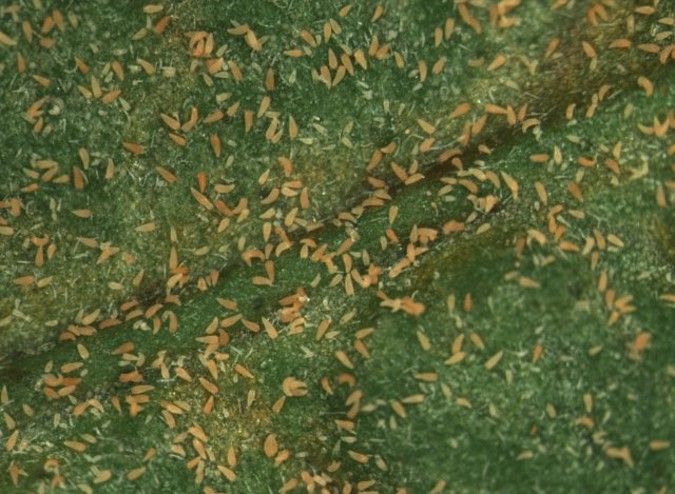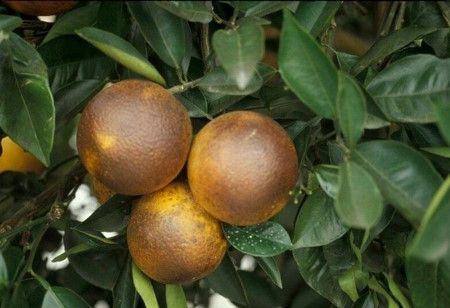The purpose of this fact sheet is to aid in the identification of a common insect pest in citrus and its damage. This publication is targeted for a general public audience
Life Cycle
Citrus rust mite (CRM) and pink citrus rust mite (PCRM) are very similar but do have subtle differences that separate the two species.
Damage
Both mites feed on green stems, leaves, and fruit. Damage from high populations of CRM can lead to fruit drop. PCRM can also cause damage to leaves.
Rust mites prefer hot, dry conditions and are generally found feeding on the fruit and foliage on the outer margins of the tree. Populations have been noted to be higher in the north bottom of trees as compared to the south upper portion of trees.
The main concern with CRM and PCRM is damage to fruit intended for fresh market, as blemishes render the fruit unable to be sold. However, when damage is severe, it can also reduce juice quality.

Credit: C. C. Childers, UF/IFAS

Credit: M. E. Rogers, UF/IFAS

Credit: M. E. Rogers, UF/IFAS; J. D. Burrow, UF/IFAS

Credit: C. C. Childers, UF/IFAS